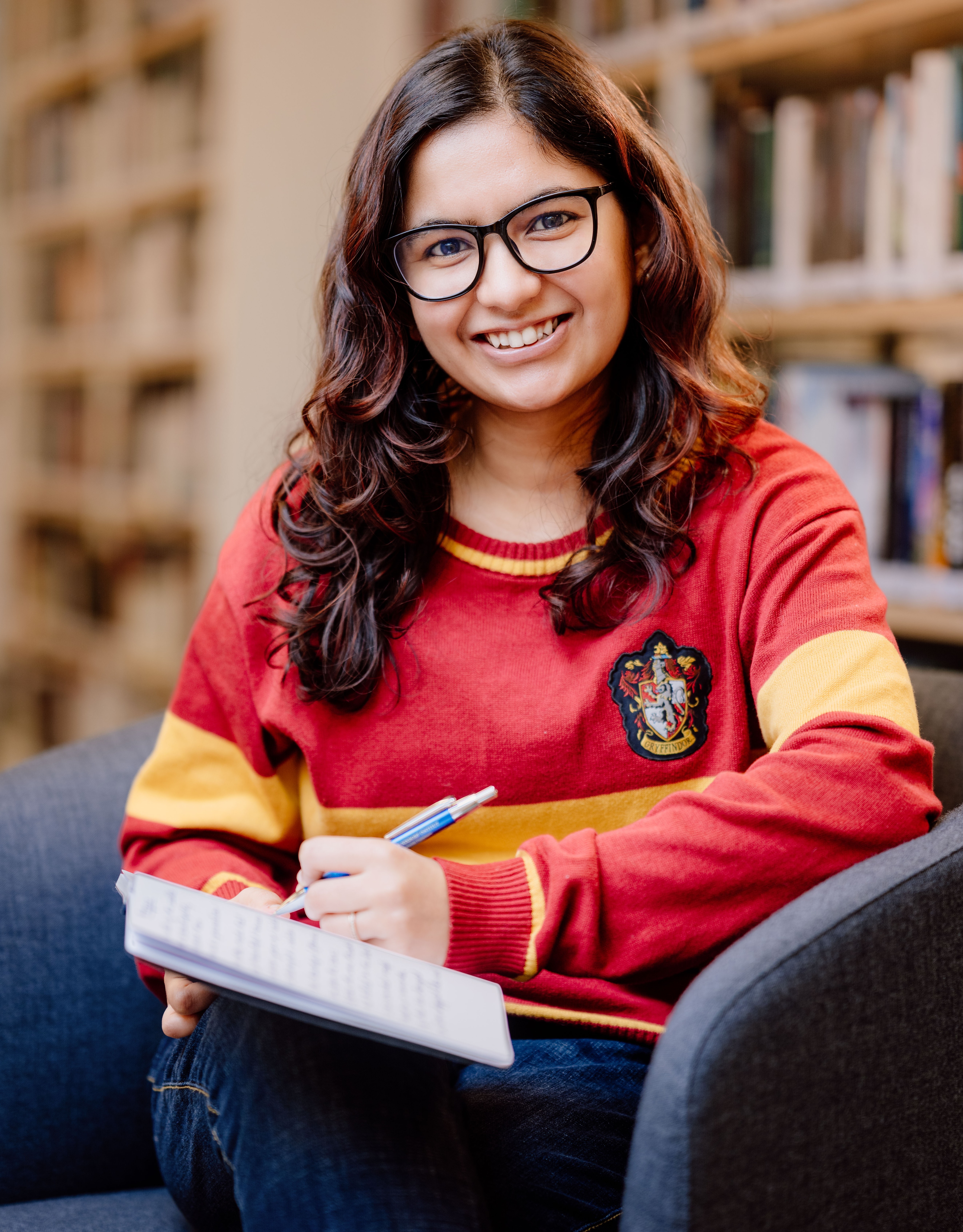Hidden Treasures of NRW: Detmold (2/2)
The people you fall in love with, the books you read, the places you visit give you happiness; but only some (very few) become a part of you! Too poetic? I’ll try to describe to you why I loved this place but I’m not very sure why it affected me so much. I don’t know if I will call it extraordinary. But hey, you’ll never find any place extraordinary if you don’t make the ordinary come alive!
On my visit to the sunny Detmold, I had the privilege of visiting the real hidden treasure of NRW: the LWL Open Air Museum Detmold1. This museum is located on the Teutoburg Forest and is the largest open-air museum in Germany. It was founded in 1960, and was first opened to the public in the early 1970s. It is a spacious area with historic buildings in beautiful nature. It is open for the public seasonally, between April 1 and October 31. It hosts more than 120 historic buildings from 500 years of everyday culture of North-Rhine Westphalia (NRW). The historic houses were dismantled at the original location and rebuilt in the museum. A walk through this museum tells us how people used to live and work in former times and what has changed over the last 500 years.
The museum is divided into North, East, West and South NRW and gives a peek into the historic buildings of that specific part of NRW with some amazingly authentic craftsmanship. I took a horse-drawn carriage ride to reach the main part of the museum. It was a serene experience.
In the north of Westphalia, we find the Teutoburg Forest and the Wiehen hills which then roll into the North Germain Plain. These regions are home to the characteristic Low German hall houses, and such examples can be found in this part of the museum.
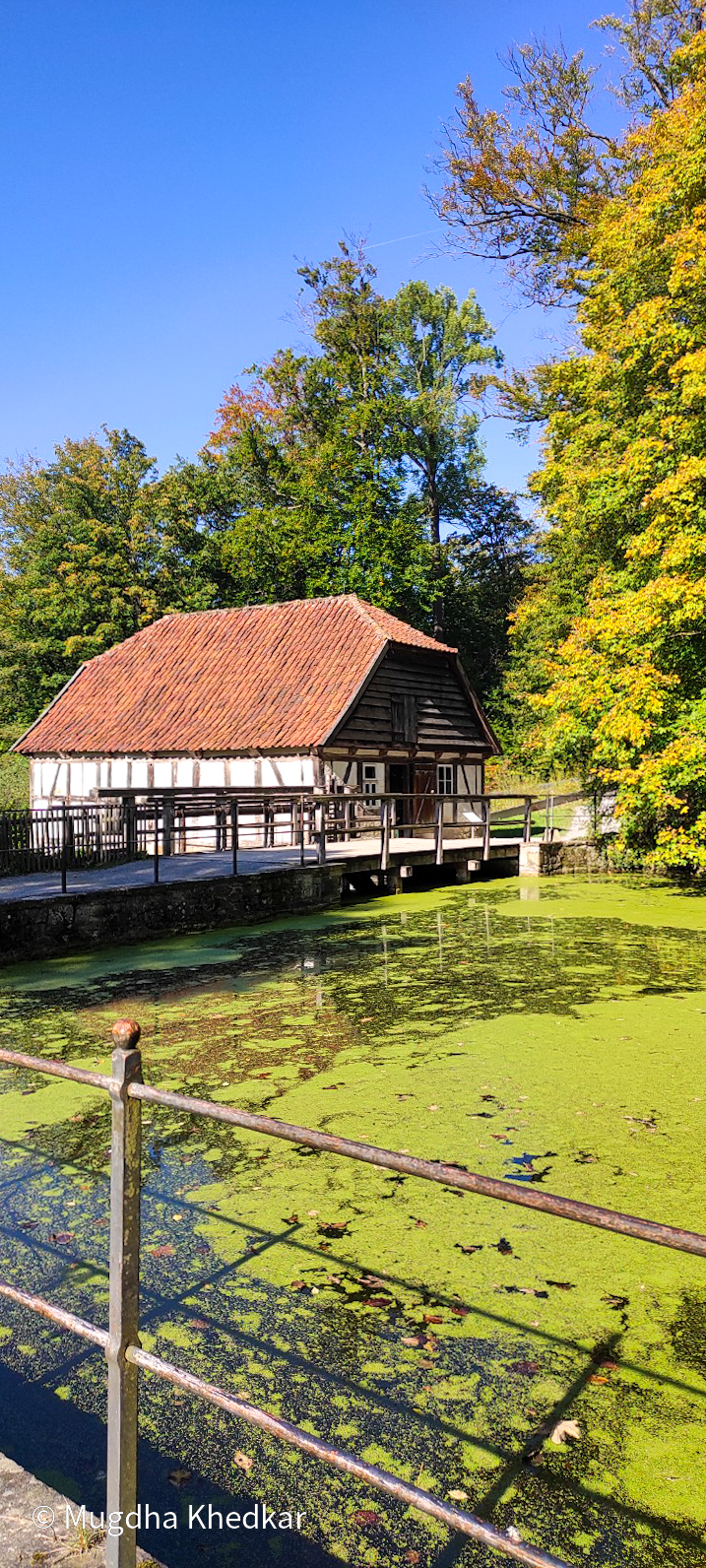
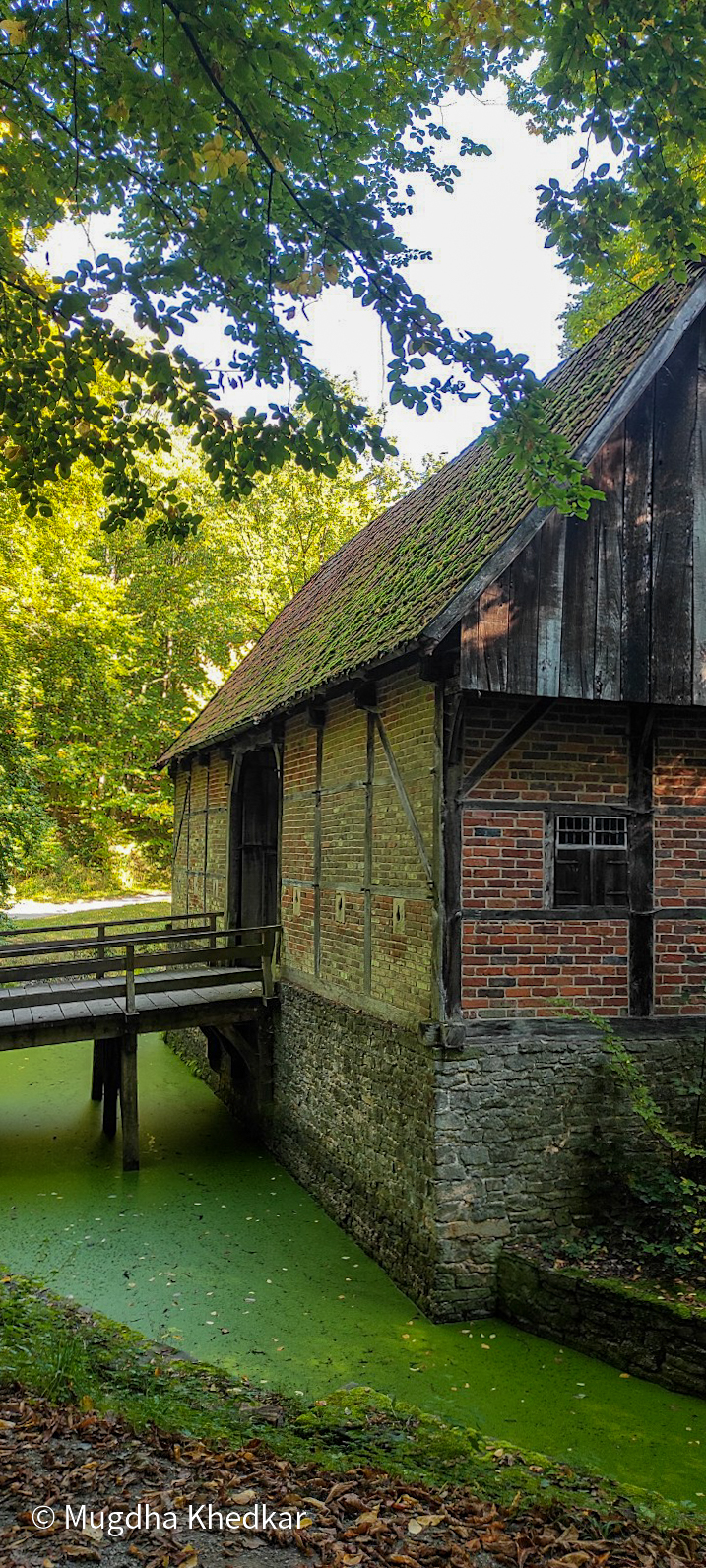
North of Westphalia in the Museum
The west of Westphalia covers the flat to slightly hilly plains between the Teutoburg Forest and the Dutch border. It is characterised by an attractive landscape where farmland, meadows and pastures are widespread. This part of the museum consists of large Low German hall houses and several outbuildings.
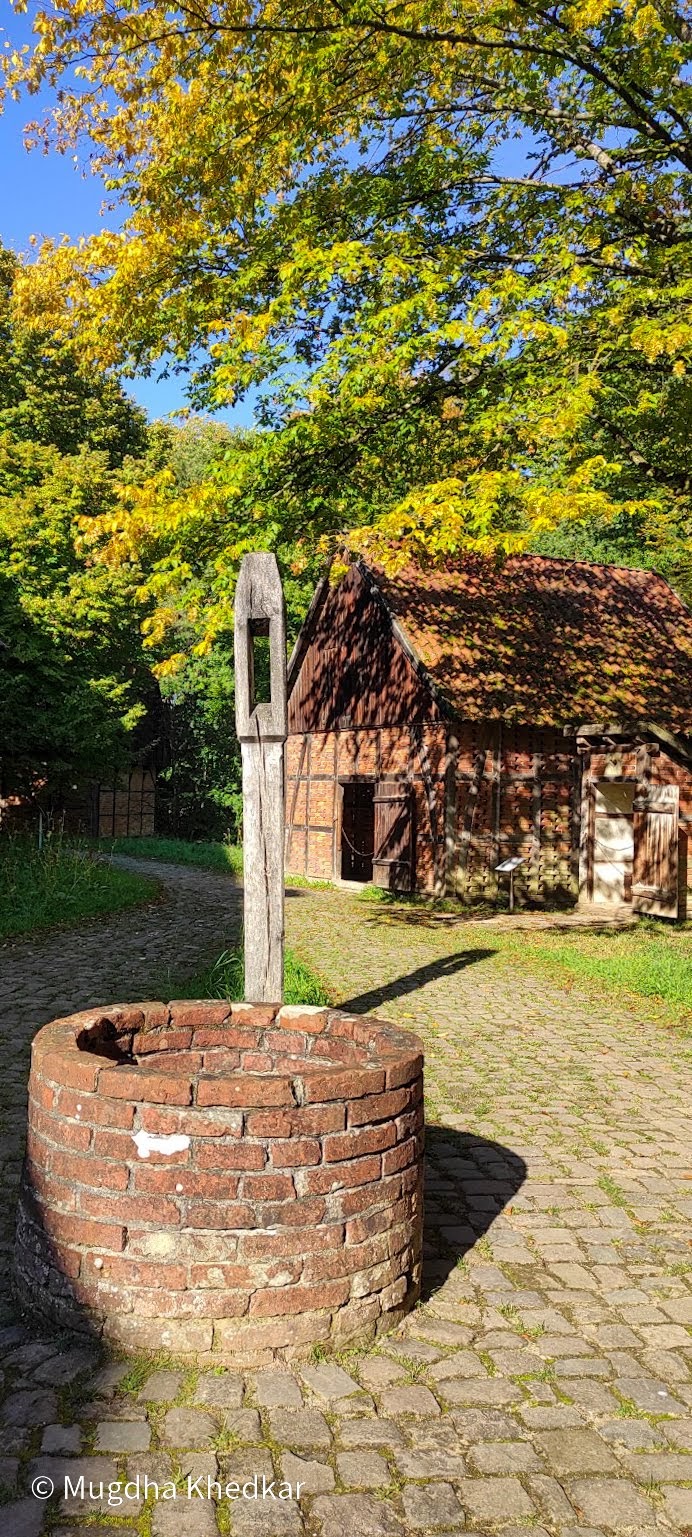
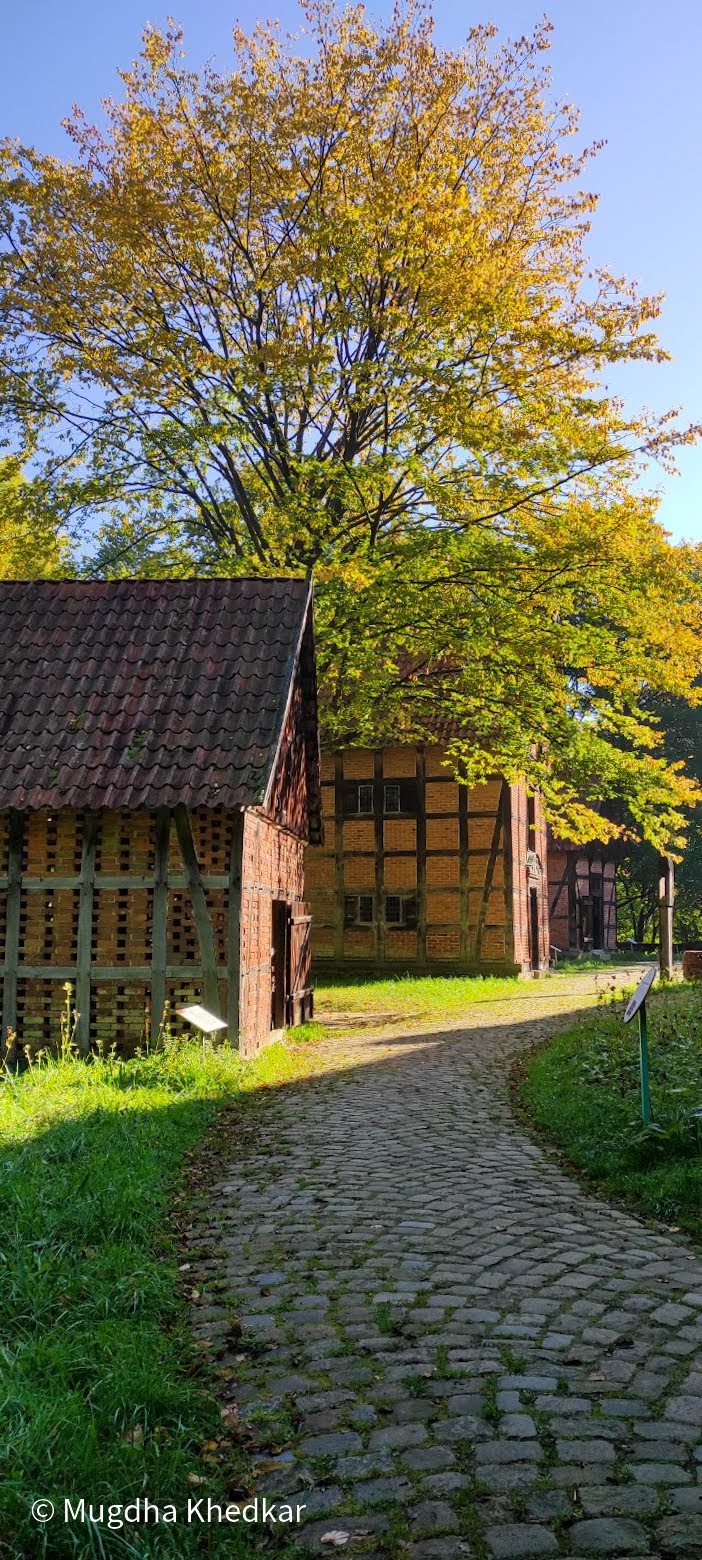
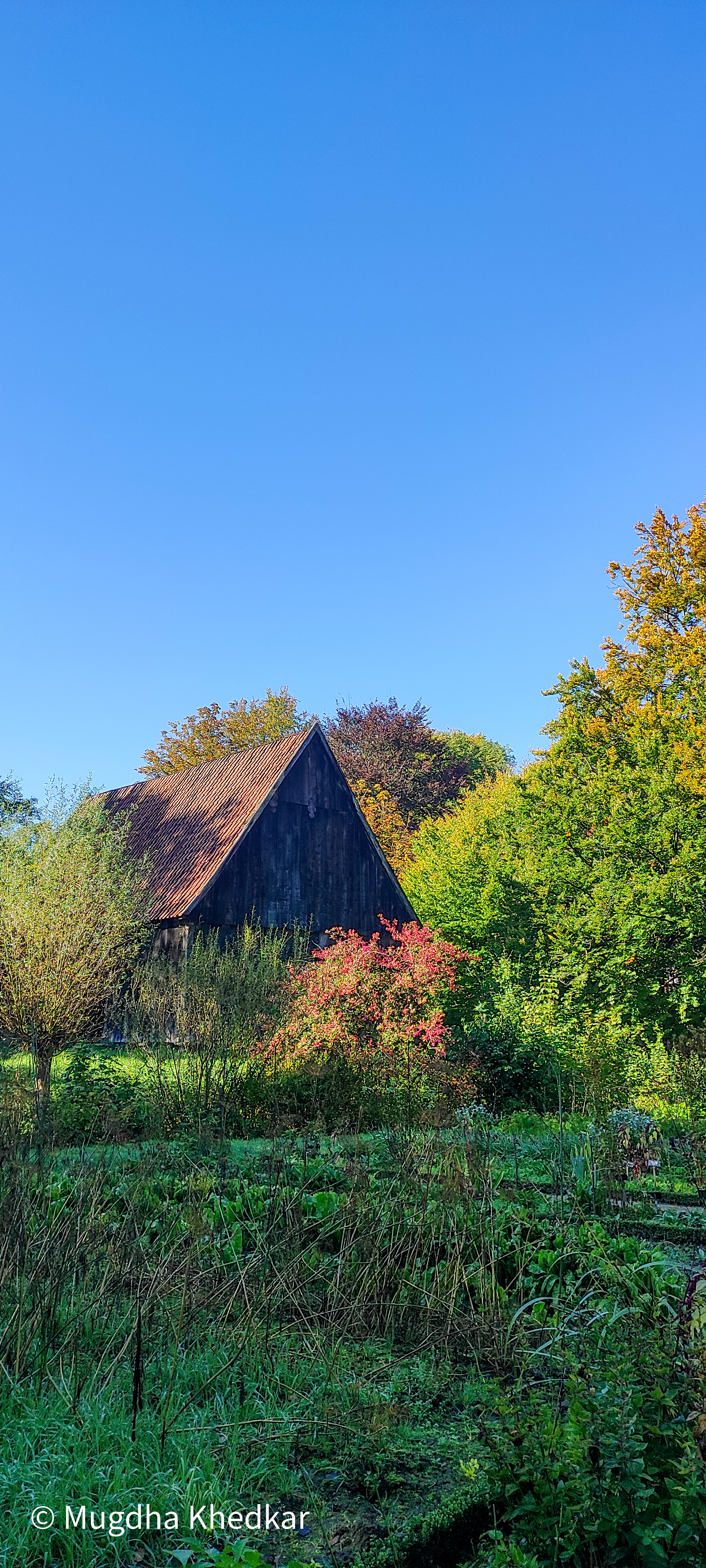
West of Westphalia in the Museum
The east of Westphalia is bordered by the river Weser and covers the western part of the the Egge Mountains. The most prominent type of settlement in the east of Westphalia is the large, clustered village which is represented by the Paderborn Village in the museum.
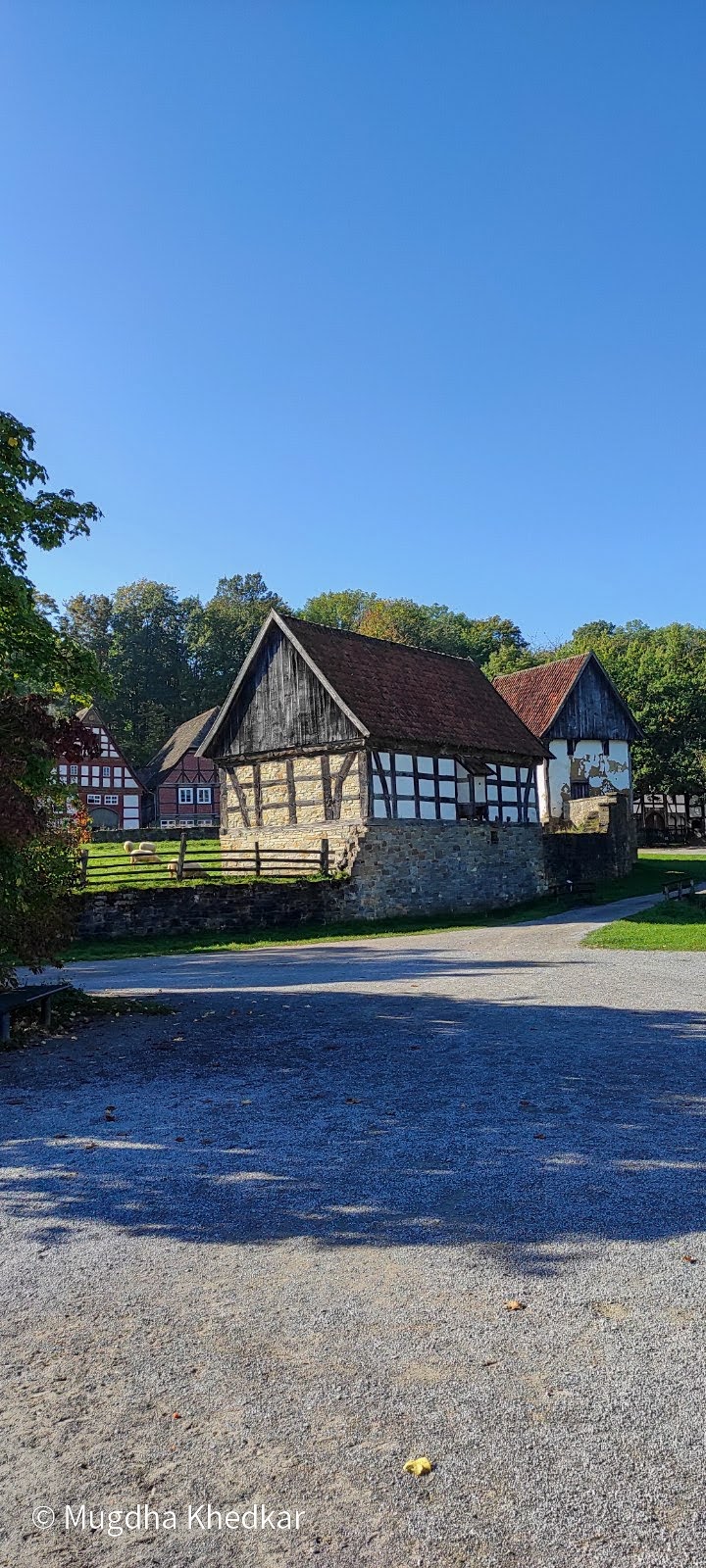
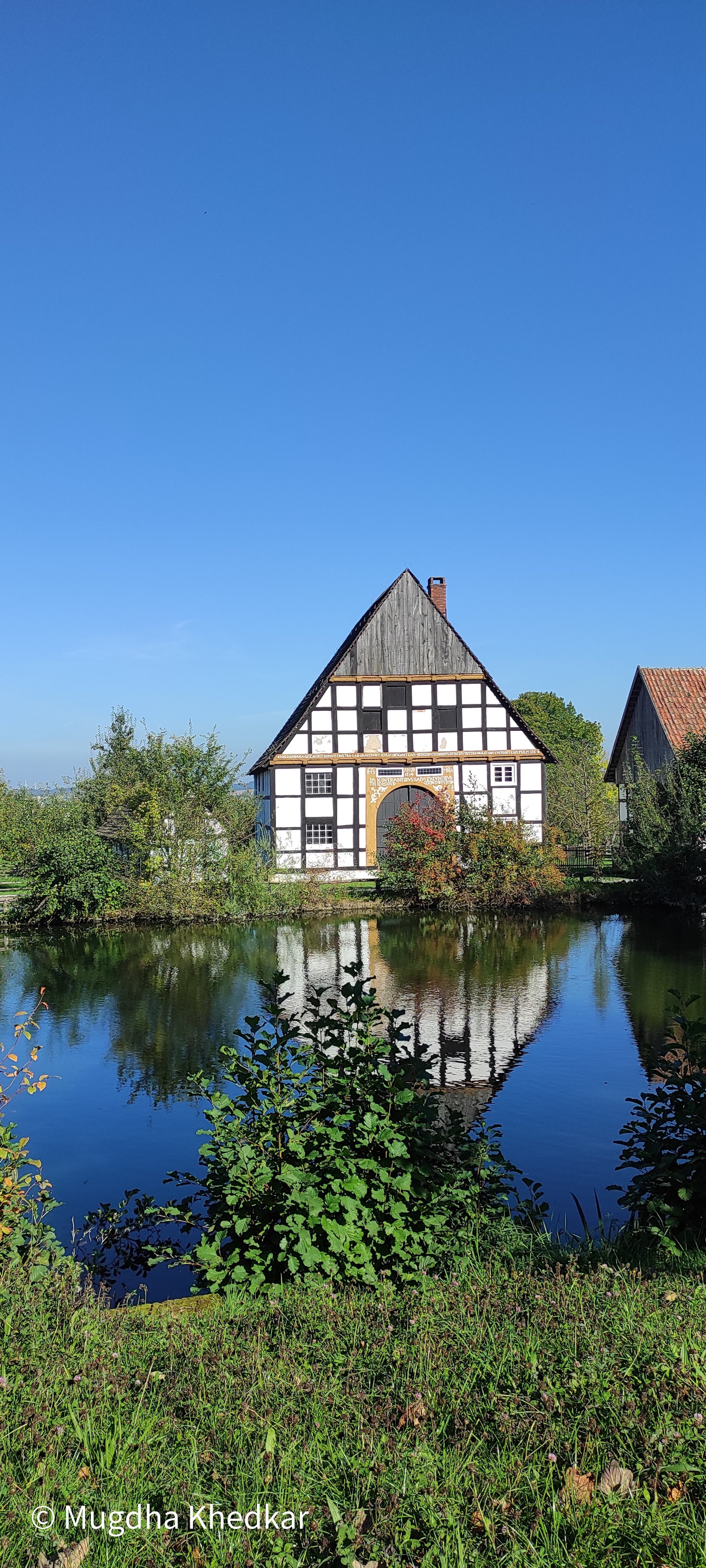
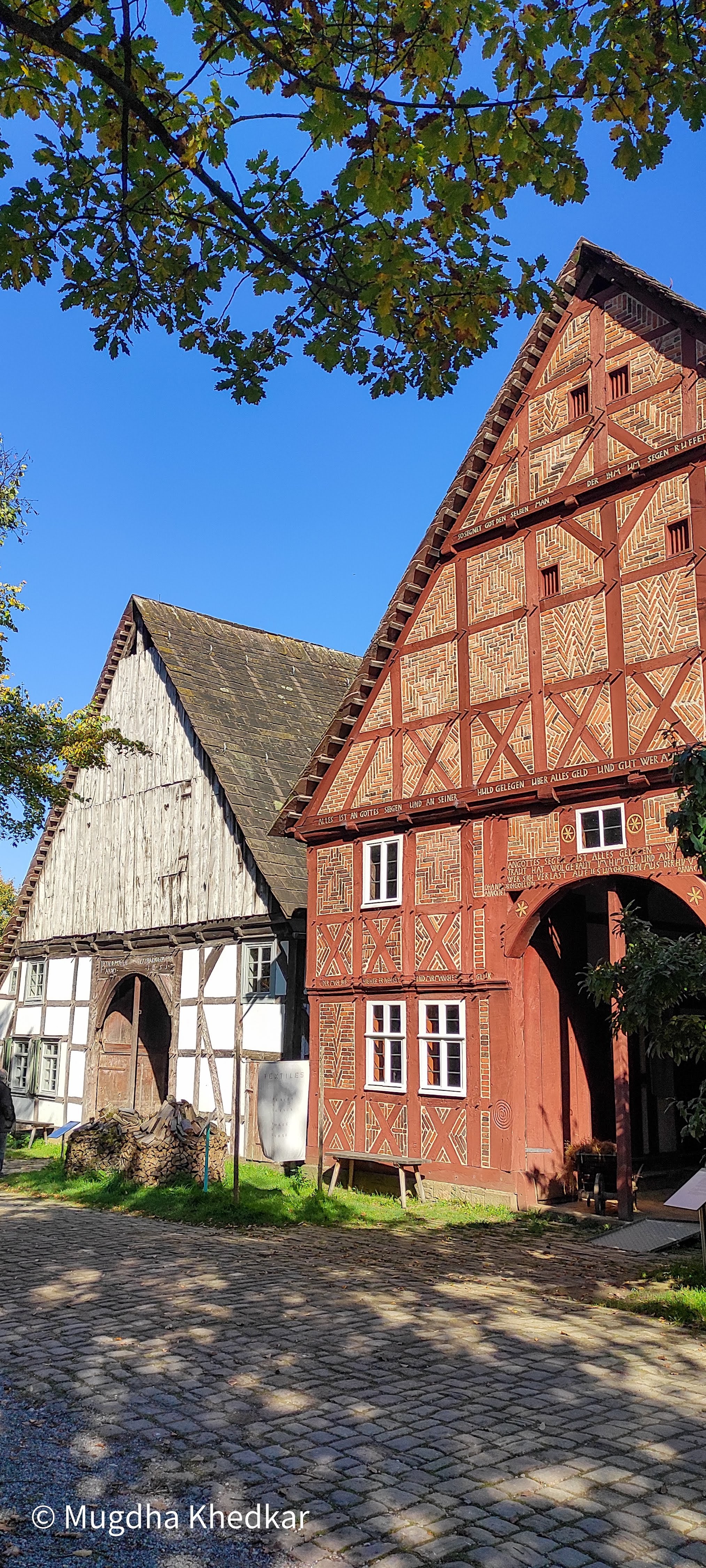
East of Westphalia in the Museum
In the south of Westphalia, the landscape is characterised by wooden highlands. The settlements in this area are typically single farms and small villages in the valleys and they are appropriately located in the southern part of the museum.
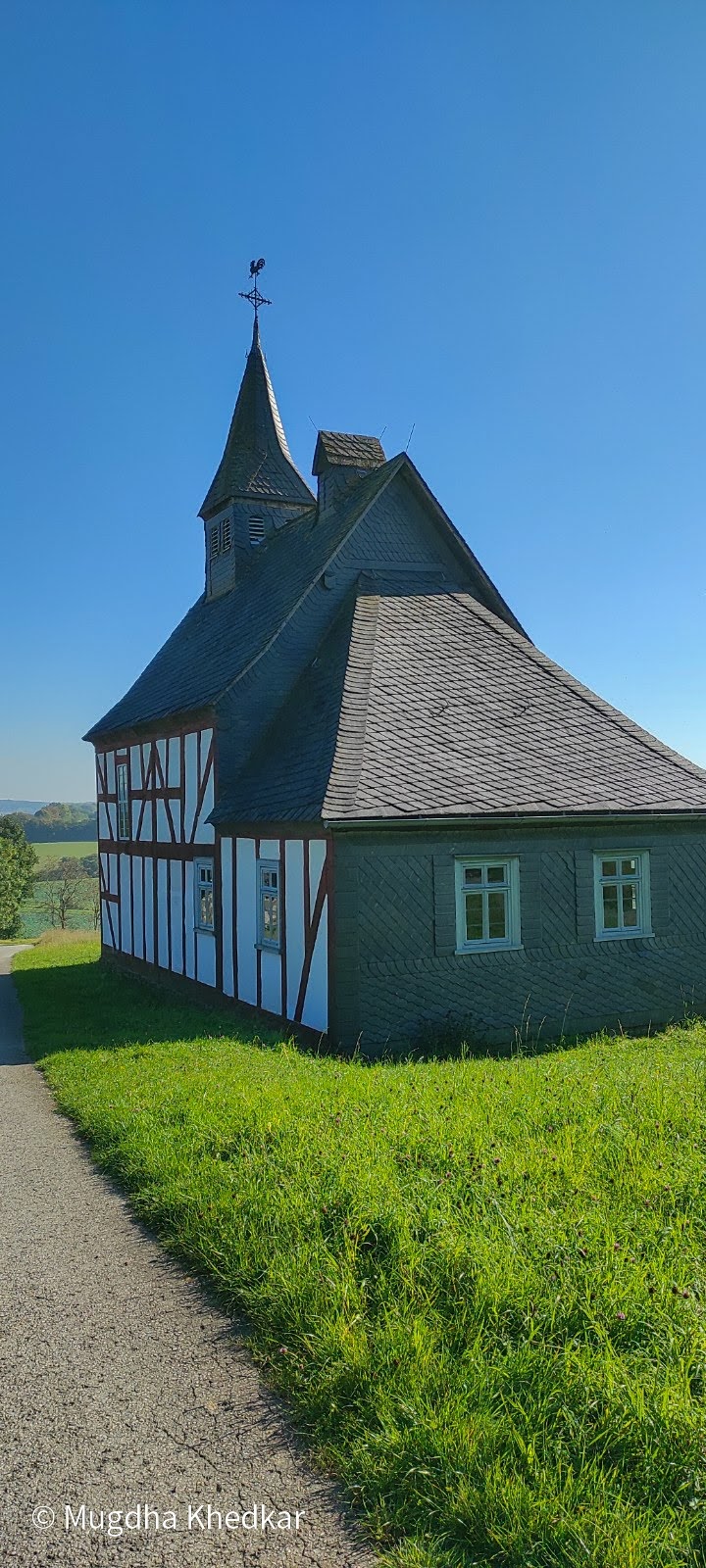
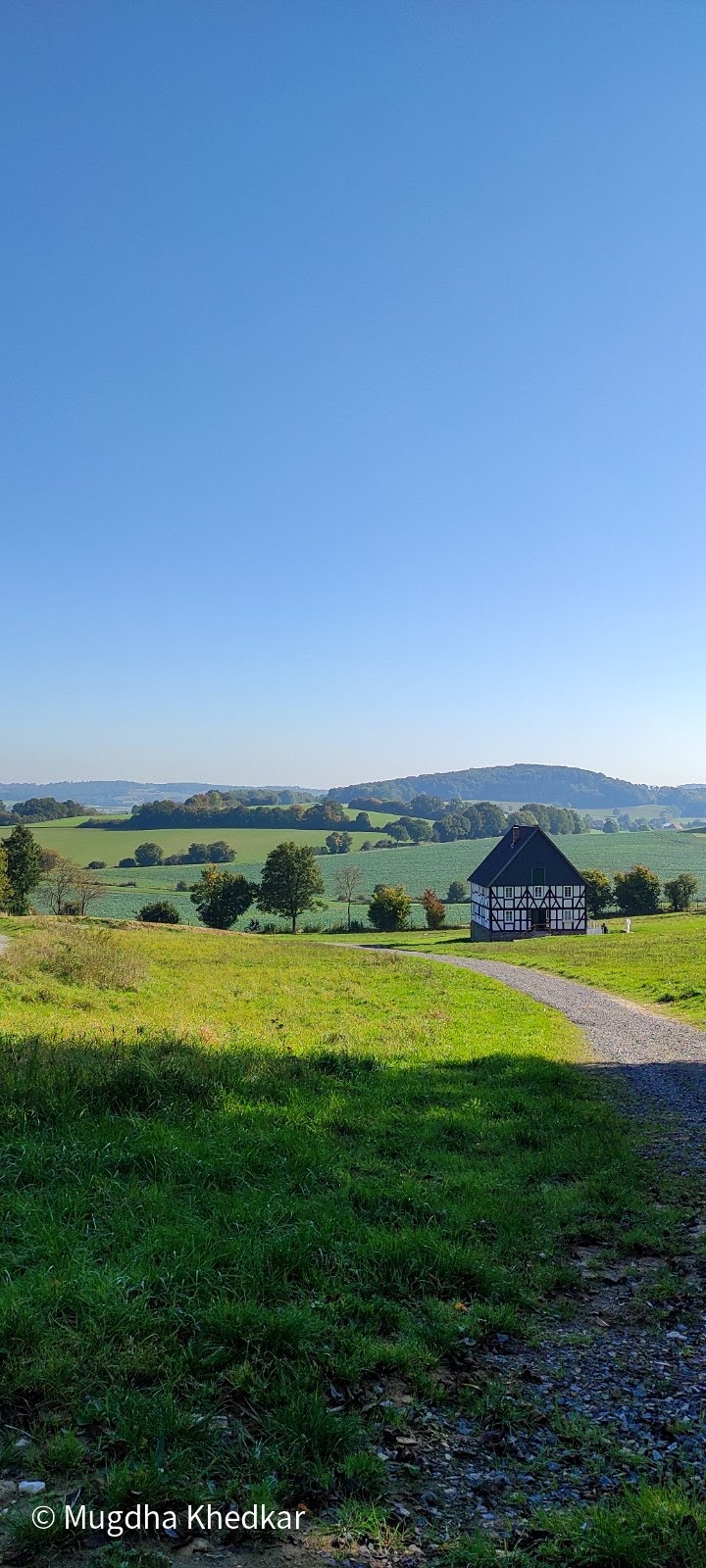
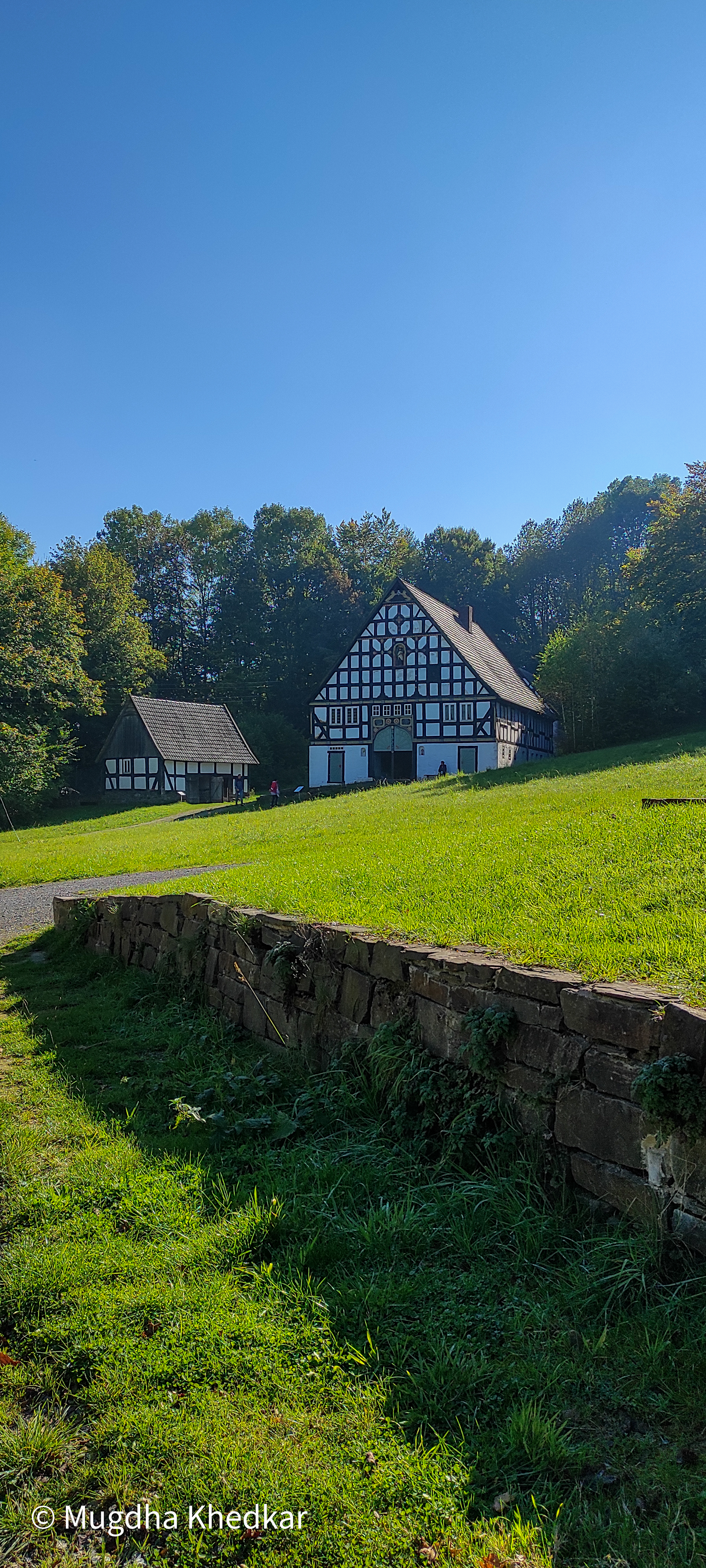
South of Westphalia in the Museum
Besides the beautiful half-timbered houses and historic buildings, I could also discover forests, meadows, gardens, farms and rare breeds of domestic animals.
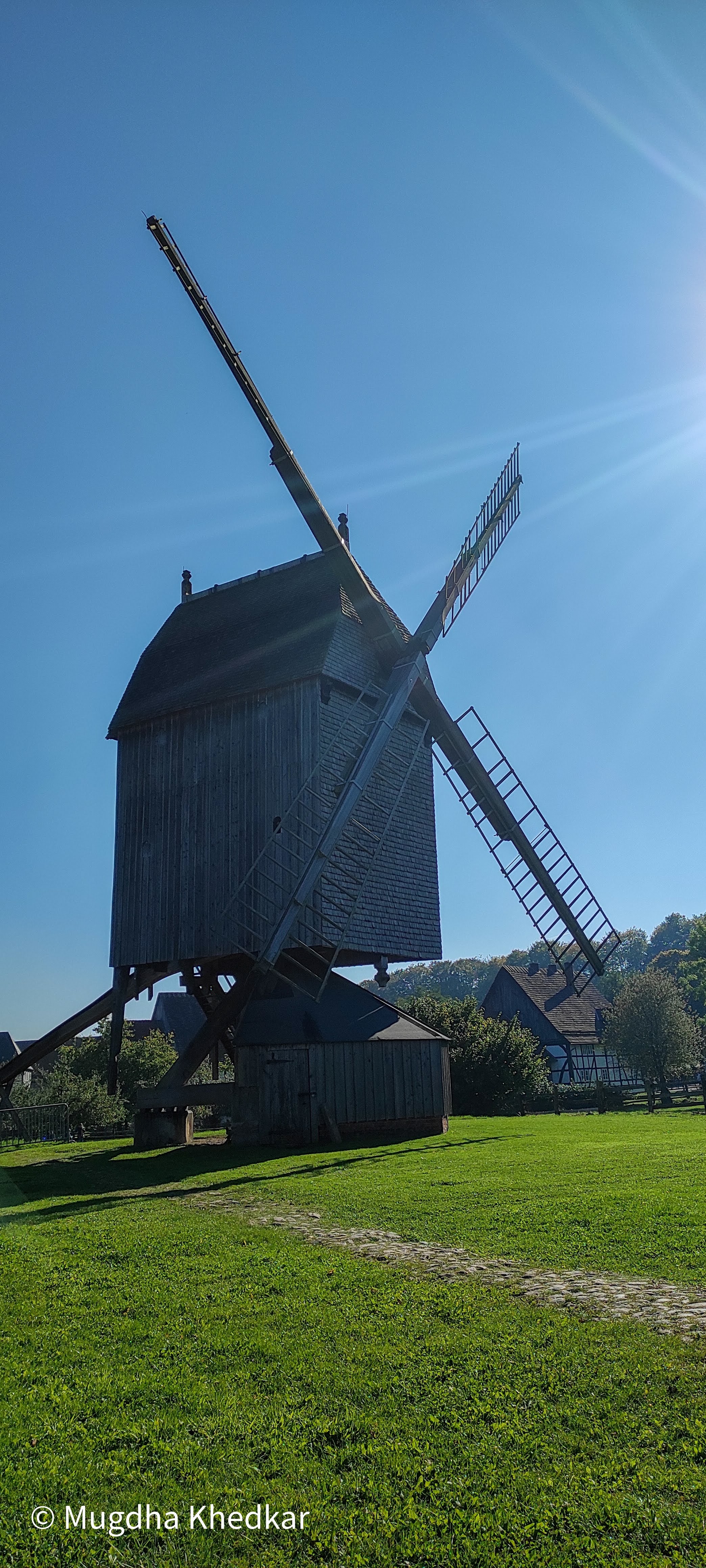
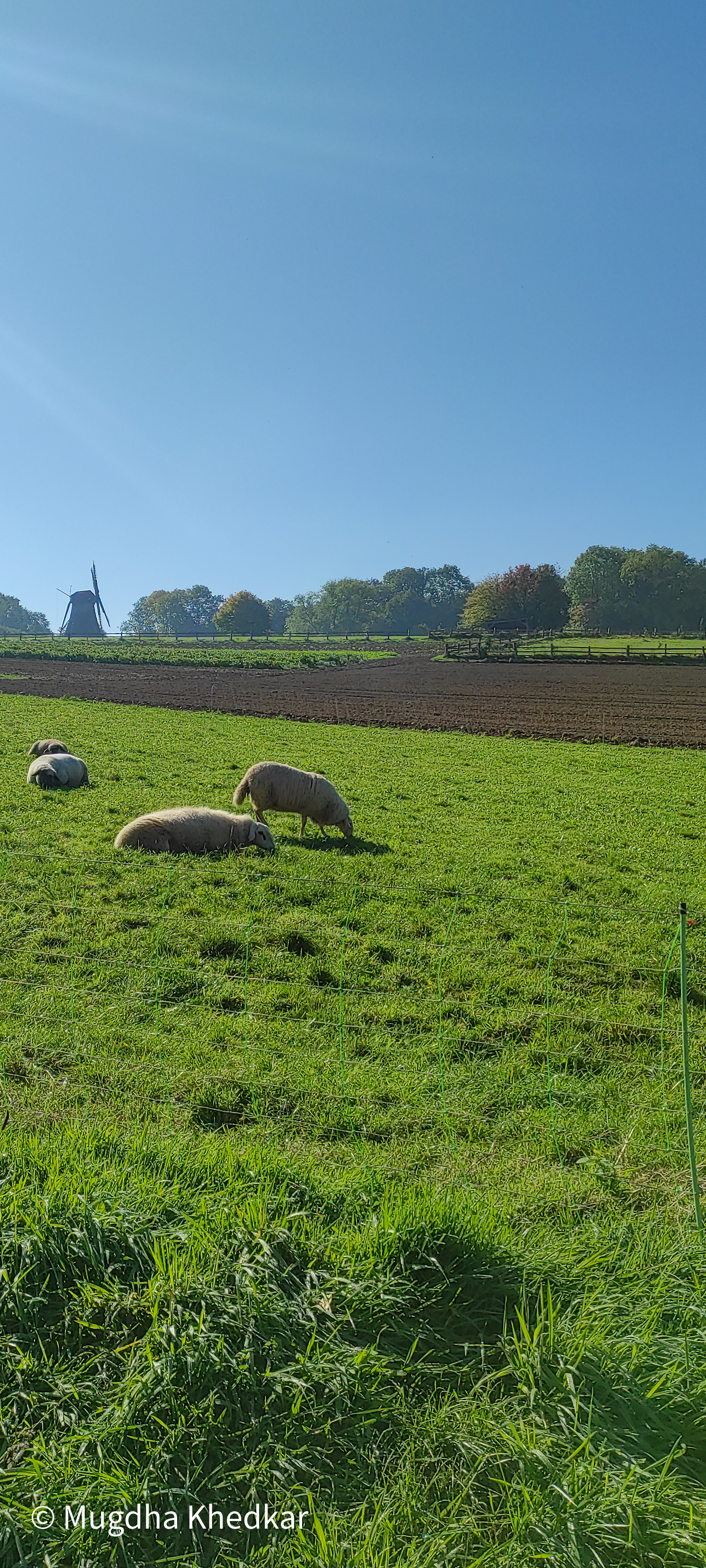
Countryside farm life
After a trek through the southern part of the museum, I reached an observation deck which gave a very beautiful and green view of the museum along with the Detmold city (I could also see the Herrmansdenkmal at the far left).
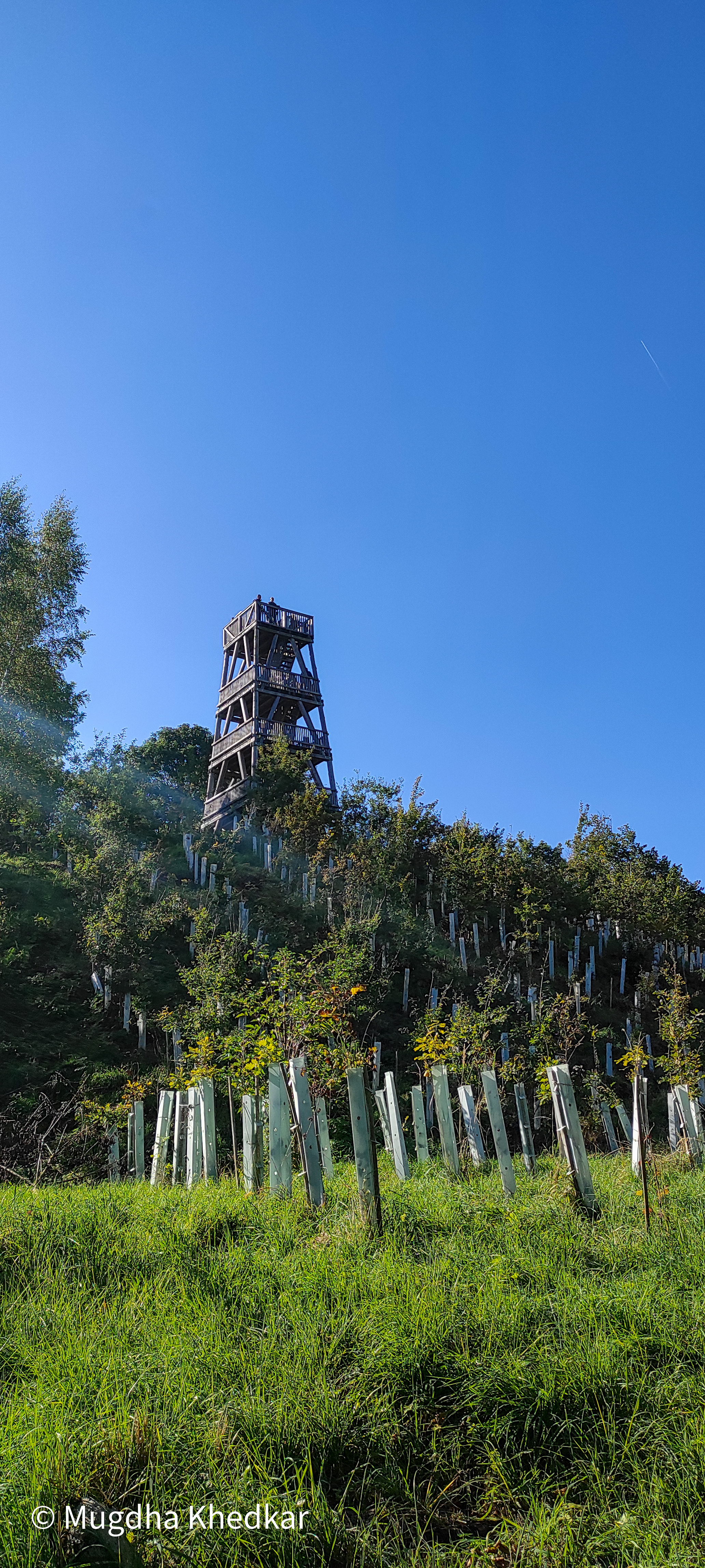
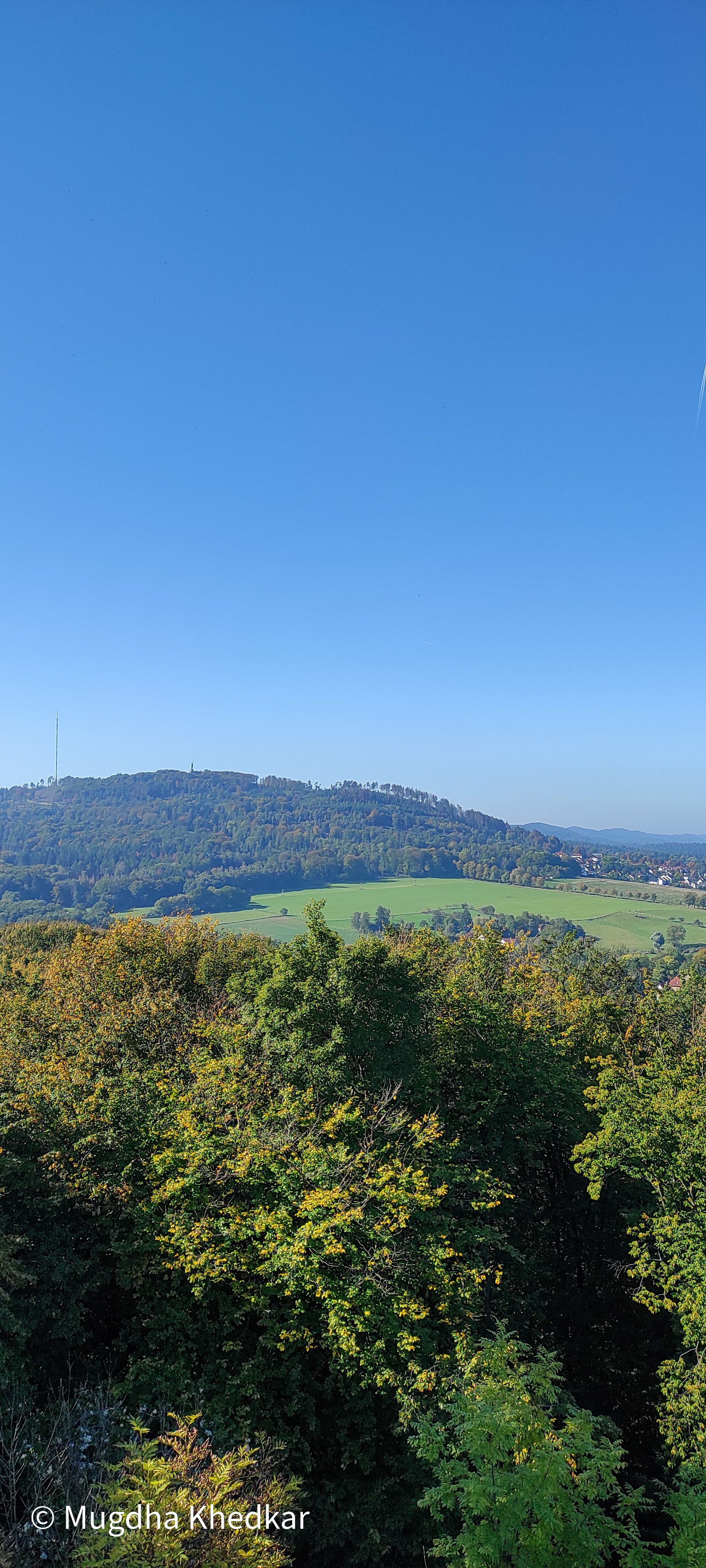
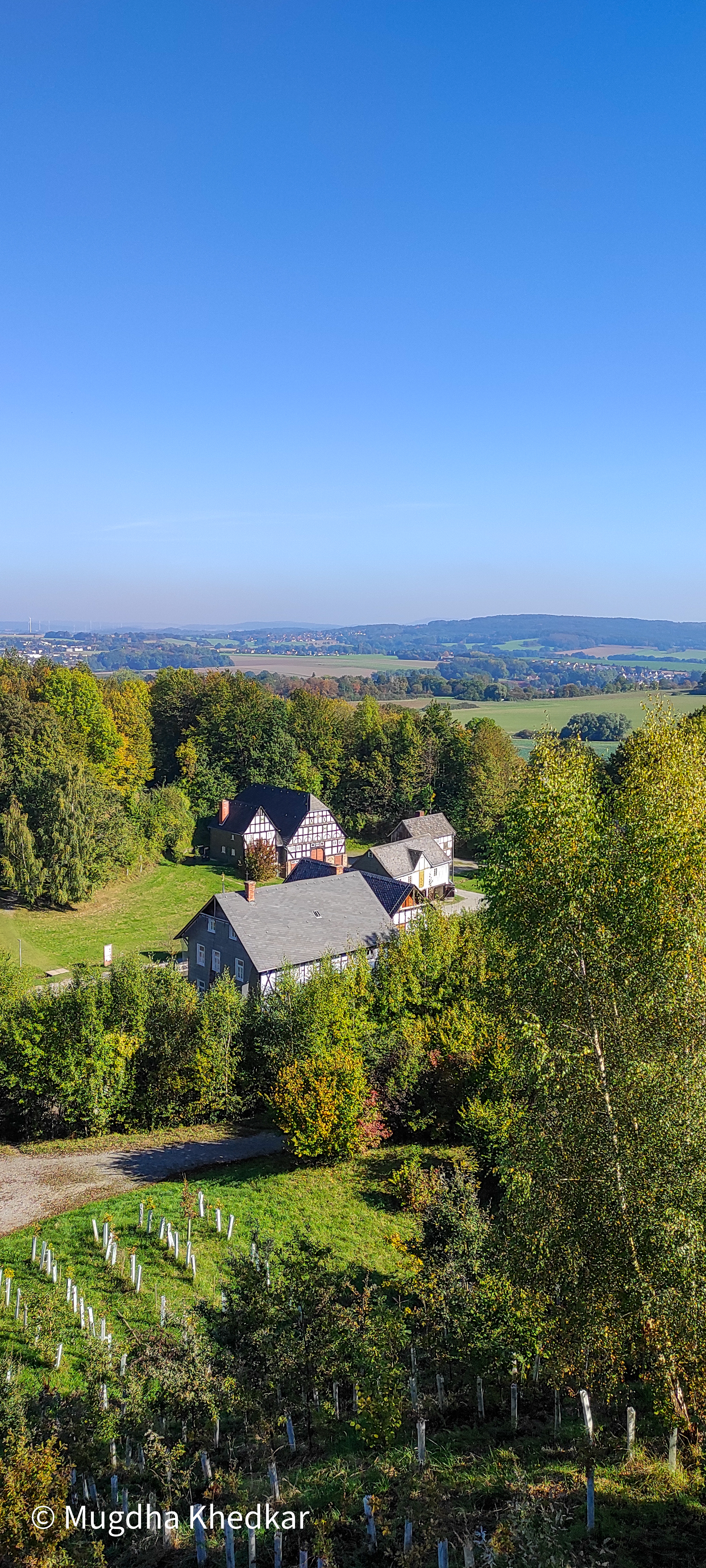
Left to Right: Observation Deck and the view from above
Unfortunately, I couldn’t visit all the buildings and look at the indoor architecture. But this was anyway not a place one can soak in completely in just some hours. I really hope I can come back to this museum again one day (hopefully I would be proficient in German by then) and understand the rich history of Westphalia. The museum is extremely well maintained and the landscapes that I could see everywhere were nothing short of magical. The pains that Germans take to preserve their history and culture are really worth applauding.
Walking through the beautiful countryside of Westphalia by myself was very eye-opening. Some years ago, I had painted a picture in my mind of what Europe might look like and it was a little overwhelming to see it come to life. There were moments when there was nobody around and it seemed a little daunting to be walking on the carpet of lush green all by myself, but that fear was nothing compared to the happiness I felt. The confidence and happiness that living in a new country with a different culture and heritage gives you can just not be measured. And my visit to Detmold was a reminder of that. I came back to Paderborn refreshed and determined to travel to more such magical places in NRW and beyond.
Most information about the museum has been borrowed from this website! ↩
